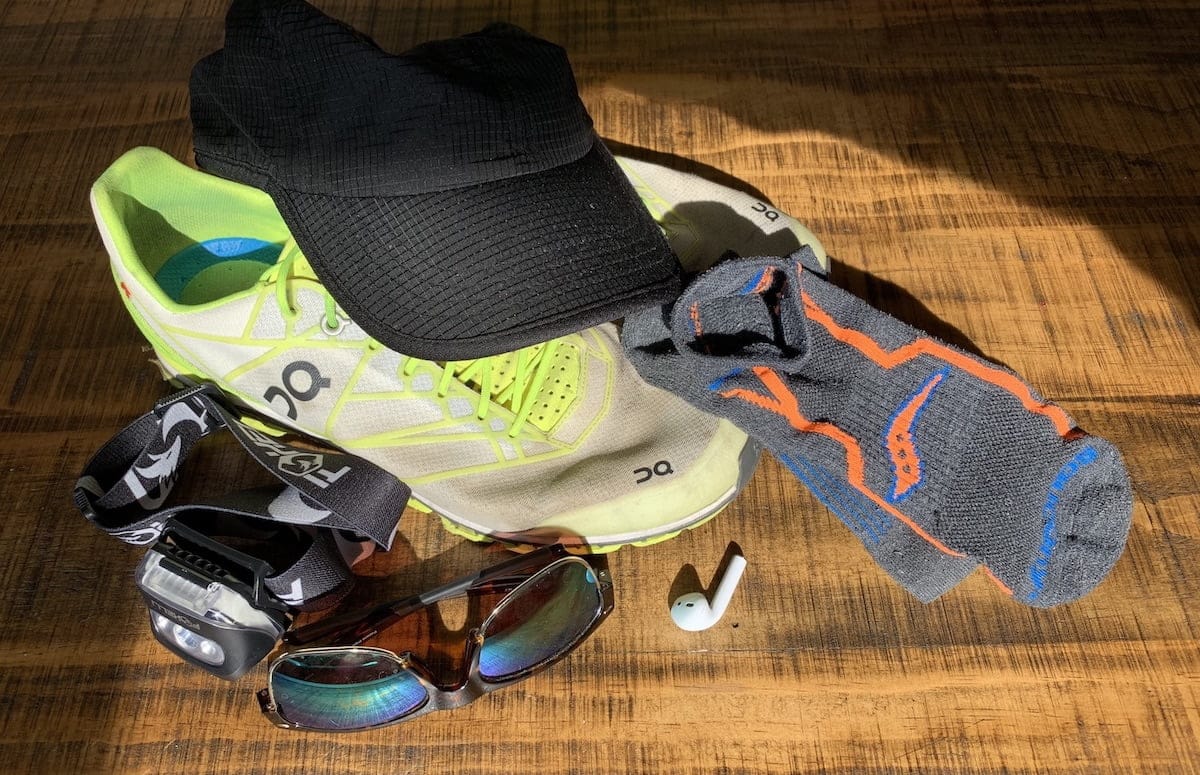Launching into a journey of 5k runs is a thrilling experience that gives a sense of accomplishment, improved fitness, and a stronger connection with the body.
If you are someone looking forward to enhancing your performance, you need to have a well-structured plan to succeed.
To achieve the desired fitness levels, you must have a structured progression, interval training, mental fortitude, and cross-training.
The detailed plan provided here will guide you through each phase of training, right from building the foundation of walking and jogging for beginners to continuous running for intermediates and making use of strategies for performance enhancement during the advanced stage.
Keep reading to learn how to conquer the 5K training plan and become fitter, stronger, and more resilient!
What is a 5K Run?
Before planning the schedule to master the 5K run, it is essential to understand the whole concept behind this. This covers a distance of 5 Kilometers, which is approximately 3.1 miles.
If you are someone who wants to get into the field of running, the 5K run is a great start. In addition, it also puts forward a challenge to experienced runners to improve their speed and endurance.
There are numerous health benefits of the 5K run, like stress reduction, weight management, a boost of self-confidence, and many more.
Health Benefits of The 5K Run

Participating in a 5K Run offers several mental, physical, and emotional benefits. Whether you are a beginner or an advanced runner, the 5K run will prove to be beneficial to your overall well-being.
- Weight Management: Running is a great way to lose and manage weight. Running regularly helps in shedding excess fat and maintaining healthy body weight.
- Bone Health: Running regularly according to the 5k training plan helps build bone density and strength. It reduces the risk of osteoporosis and other such diseases.
- Improved Lung Capacity: If you run regularly, it helps to expand lung capacity and helps in having better respiratory health.
- Enhanced Mental Clarity: Running can serve as a tremendous meditative effect to improve focus. Practicing this daily can help in improving cognitive function.
- Cardiovascular Health: Engaging in a 5K run can help strengthen the heart, enhance circulation, and lower the risk of heart disease. Also, it helps in maintaining healthy blood pressure.
Preparation Phase and Recovery Guide for 5K Training Plan

Your preparation will provide the necessary foundation for a powerful and assured performance. Make a customized workout schedule that progressively raises the difficulty level to give your body time to adjust without experiencing unnecessary stress.
The recuperation phase of your training program follows the preparatory phase. Prioritizing recovery practices after each workout enables your body to recuperate, adapt, and grow stronger.
There are certain criteria that you should look out for before starting your 5K Run journey. Find them below –
- Health Check & Consultation: Before starting any training plan or activity, the best thing to do is consult a healthcare professional to ensure you are physically fit.It is strictly advised for those who have any pre-existing medical issues or have been inactive for an extended period.
- Choosing the Right Footwear: It’s essential to invest in a good pair of shoes to provide you with proper cushioning and support. The best thing you can do is to visit a specialty running store to get a shoe for your foot type and running gait.
- Setting Realistic Goals: You should set both short-term and long-term goals for the 5K run you will be participating in. Make sure you are setting achievable goals which will keep you motivated and focused.
1. Beginner Phase: Building a Solid Foundation

When building a solid base of a 5k training plan, it is essential to take the right steps and advance toward the goal. At first, you should take the walk-to-jog approach and gradually increase the jogging intervals.
Once you get used to this structure, it is time to reduce the walk time. Keep in mind that proper form and breathing rhythm are essential when running.
Maintain a good running posture and breathing rhythm to prevent injury and improve performance.
Weekly Schedule
- Week 1-2 Walk-Jog Intervals (3 to 4 days a week): Alternate between walking for 1 minute and jogging for 30 seconds. Perform this in intervals of 4 to 5 times. Slowly increase the jogging time and reduce the walking time.
- Week 3-4 Increasing Jogging Intervals ( 3 to 4 days a week): Jog for 2 minutes and then walk for 1 minute to recover. Do it for 6-8 intervals in every session. Maintain a conversational pace when jogging.
- Cross-Training & Rest ( 2 days a week): Participate in low-impact activities like cycling and swimming. On the remaining days, take time off to recover.
2. Intermediate Phase: Progressing to Continuous Running

Slowly start increasing your running duration until you can cover the whole 5K distance comfortably. Make sure to maintain a specific pace when running.
You can gradually introduce workouts in intervals, which will help in enhancing your speed and endurance. Also, alternate between high-intensity running and moderate-paced recovery periods.
At this stage, you should incorporate cross-training activities like swimming, cycling, or other strength-based activities that will help enhance fitness and reduce the risk of overuse injuries.
Another very important component to keep in mind is to keep a check on the nutritional and hydration guidelines.
Make sure you have a healthy diet with all the nutrients in balance. Drink enough water before, during, and after the running activities.
Weekly Schedule
- Week 5-6 Continuous Running with Walk Breaks ( 4 days a week):You should aim to run for 10-15 minutes without stopping and then take a 1-minute break. Keep repeating this, and once comfortable, increase your running time and decrease the number of intervals.
- Week 7-8 Running Longer Distances (4 days a week):Increase the running time by 5 minutes weekly. Make sure that you are maintaining a comfortable pace and proper form.
- Interval Training and Cross Training (2 days a week):At this stage, you need to incorporate interval workouts and continue cross-training activities to maintain overall fitness.
3. Advanced Phase: Speed and Endurance Enhancement

Now, you need to start improving your running techniques, which include stride length, foot strike, and cadence. Work on gait analysis to track your improvement.
To enhance your speed and race pace, you must incorporate tempo runs and fartlek workouts. Practice more hill workouts to strengthen leg muscles.
Participate in longer runs to build endurance. At the same time, you need to work on building mental strategies to overcome challenges and focus on runs.
Weekly Schedule
- Week 9-10 Tempo & Interval Runs ( 4 to 5 days a week):Practice tempo runs at a challenging yet sustainable pace. Make it a point to include intervals at a faster pace. Allow yourself to recover between intervals.
- Week 11-12 Hill Training and Long Runs (4 to 5 days a week):Incorporate hill training to build leg muscles and slowly increase your long run distance.
- Strength Training and Recovery (2 days a week):Strength training helps improve the leg, core, and upper body. Practice foam rolling and stretching. Besides all the exercises, resting plays an integral part of the training program.
4. Race Preparation and Peak Performance Phase

It is quite natural to feel nervous before the race day. So, it is advised that you practice relaxation techniques and boost your confidence. In addition, make sure you know the race route and conditions.
- Week 13-14 Tapering Period (3 to 4 days a week): Reduce training by 20%-30% to recover and rest. Make sure to maintain intensity during shorter runs.
- Week 15 Race Simulation (2 days a week): Run with a shorter tempo and race-pace intervals.
- Week 16 Race Week (2 to 3 days of light running): Run for a shorter distance to maintain readiness for the race day.
5. Post-Race Recovery Phase

Engage in light activities like walking and stretching to recover after the race. Take some time off to rejuvenate and rest.
After the 5K race, you should be making plans for your next races. Make sure that you stay active even when the race is over, which will boost your health conditions and make you fitter.
Following are some things you need to take care of:
- Get enough sleep and relax to aid your body’s healing process.
- Staying hydrated requires drinking water continuously throughout the day.
- To assist muscle growth and repair, eat meals that are well-balanced and contain complex carbs, lean proteins, and healthy fats.
- To encourage blood circulation and relieve muscle stiffness, engage in low-intensity exercises like walking or gentle cycling.
Equipment Needed for the 5K Run

When participating in the 5k run, you must take comfort, safety, and optimal performance into consideration. Following are some equipment you will require to give your best:
- Running Shoes: The first thing you should invest in is a pair of good shoes. Make sure that the shoe you are getting is of a comfortable fit and provides support and cushioning. Also, choose the right show defending on your foot type and running style.
- Moisture-Wicking Clothing: Getting this kind of dress helps you stay dry and keeps your body sweat-free. Also, get clothes that are breathable and comfortable.
- Moisture-Wicking Socks: To avoid blisters and pain, choose moisture-wicking socks with the right cushioning.
- Running shorts or leggings: When choosing shorts or leggings, take note of the weather conditions. Get shorts or leggings that are comfortable for running.
- Hydration gear: You can get hydration packs if you are running in warm weather. You can get a handheld water bottle or hydration packs.
- Running belt: You can get armbands or running belts to keep your water bottle, energy gel, or other things. Make sure that the armband does not create any issues for you when running.
Conclusion
The 5K Run is a great endeavor to pursue for people aspiring to be athletes and get stronger and fitter. This detailed plan will help beginners, intermediate, and advanced runners to ace the 5K run.
The first step, to begin with, is making up your mind and getting a structure ready for yourself to achieve your goal.
The roadmap of the training plan above shows that gradual progression, the right techniques, and mental preparation will surely bore fruit, and you will thrive on race day.
It does not matter if you are a beginner because, with the right guidance and following the steps above, you can surely cross the 5K mark.
Stay consistent and ace the 5K Run with our 5K training plan!
Frequently Asked Questions
Is the 5K Distance Suitable for Beginners?
Yes, in running and fitness, the 5K distance (3.1 miles) is frequently seen as acceptable for beginners. It offers a manageable challenge that might aid newbies in laying a foundation for endurance and cardiovascular fitness.
Whether someone is new to jogging or switching from a more sedentary lifestyle, the distance is easily achievable.
How Do I Prevent Injuries During Training?
For training to cause the least stress on joints and muscles, attention must be paid to good form and technique. To prevent sudden physical stress on your body, gradually introduce new activities and equipment.
If you experience pain or discomfort, alter your activity or quit it altogether to prevent aggravation.
Is it Okay to Participate in the 5K Run with Pre-Existing Medical Conditions?
Even with pre-existing medical issues, running a 5K is still feasible, but it’s important to put your health and safety first. Before making a choice, speak with your healthcare physician.
Based on your unique situation, present health, and any possible hazards related to the event, they can provide you with tailored advice.
What is Tapering, and Why is it Necessary Before a Race?
To guarantee that an athlete’s body is in the finest possible condition on race day, tapering is crucial. By reducing accumulated weariness, it improves mental clarity, neuronal coordination, and physical strength.
The risk of overuse injuries is reduced, and the immune system can strengthen, reducing the likelihood of illness by reducing training stress.




